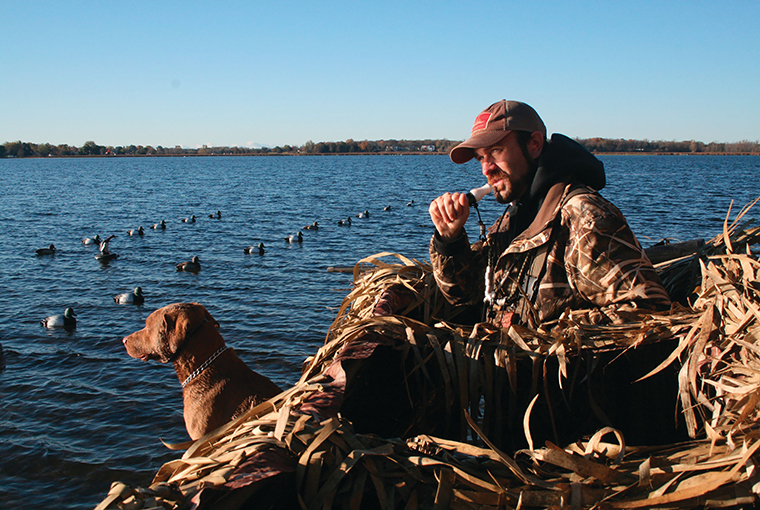
Legal shooting time arrives and we’re ready for action. A small flight of buffleheads pass by out of range followed by a couple of bluebills. The next group of five bluebills spots our decoys and swings toward us. My hunting partner, Bob Boychyn, drops the lead bird and I’m able to take a second bluebill.
Wingmen Guiding owner Adrian Taylor sends out his four-year-old Chesapeake, Max, who retrieves the first bird and then returns to the water to find the second. As the retriever returns to the blind, a single bufflehead rockets by at 30 yards. We both shoot and miss, but I’m just happy the birds are flying.
What The Bay offers
Earlier in the morning while we were driving down to Belleville and the Bay of Quinte, we voiced our apprehension about how the early November migration of ducks had been progressing. We were booked in a week earlier for a late-October hunt, but Taylor suggested we defer because of the slightly later than normal arrival of divers. We were pleased to hear that the last couple of days had offered great hunting for his clients.
The Bay of Quinte is located less than two hours east of Toronto on a long, narrow inland bay of Lake Ontario. From Trenton in the west, the bay extends east to Belleville and Deseronto and then turns south towards Picton. With a number of different ramps scattered throughout the bay, there are multiple hunting locations based on varying wind conditions and bird behaviour.
Taylor’s boat, a 20-foot Crestliner Retriever, doubles as a blind and provides easy access to a variety of hunting spots. Small islands, peninsulas, marshy bays, and heavily treed shorelines are all choice locations for a morning hunt.
The perfect set-up
Our boat is positioned at the end of a small point of land in about a foot of water with shoreline trees 10 feet behind us. A Beavertail folding blind with grass matting provides perfect camouflage as it completely covers the top of the boat. The openings in the top of the blind allow hunters to stand up when shooting — as many as four hunters can be accommodated, with plenty of room for gear. Our 100-plus decoy spread complements our set-up.
It’s been 20 minutes since our last duck, so we’re ready for more. The wind is 15 kilometres out of the west and the temperature is rising to 5 ̊C. It’s the first week in November, so we’re not going to complain about the weather.
Two flights of bluebills pass within 100 yards, but they don’t veer. A single whistler surprises us from the opposite direction, nearly flying past before banking and directly approaching. My hunting partner makes a nice 20-yard shot and Max finishes off with an enthusiastic retrieve.
An hour into the hunt, we have six birds, a couple of buffleheads, three bluebills, and a goldeneye. Good numbers of ducks, including mallards, are moving back and forth, so we decide to be a little bit selective and pass on the buffleheads.
Mallard time
A few minutes later, we let two buffleheads pass through the decoys and then I hear Taylor imitating a mallard. Just like that, three northern mallards cup their wings. I miss my shot, but my buddy drops a nice drake.
It’s getting close to 10 a.m. and the ducks continue to fly. Taylor starts the mallard call and he coaxes a drake into 40 yards for me. Max is extremely pleased with himself when he deposits the bird at our feet.
“One more duck and we’ll have our limit and be ready to head back in for breakfast,” said Boychyn.
My experience
Taylor has been operating Wingmen Guiding for nine years and has built a solid reputation. His high percentage of repeat clients is a testament to his hard work and productivity.
During conversations prior to our hunts, Taylor always informed me about his daily scouting activities and the changing patterns of flights of different species of ducks. We always had a primary as well as back-up spots. Wingmen also tries to match the hunt to the type of experience the clients are looking for.
It’s been a great day with Wingmen Guiding and I’m already looking forward to next fall. Just to be on the safe side, I’ve already asked Max to stay in shape for next year.
Species & hunts offered:
- Starting in late September, Taylor has access to small ponds in the Madoc/Tweed area for wood ducks and mallards.
- Field hunts for Canada geese can be arranged.
- Towards the end of October on the Bay of Quinte, the bluebill migration starts with redheads moving in towards the end of the first week in November. Goldeneye (whistlers) start to migrate in the second week of November. Mallards, widgeon, and pintails move through consistently, especially earlier in the season. Hunting lasts until freeze-up, or about the first weekend in December.
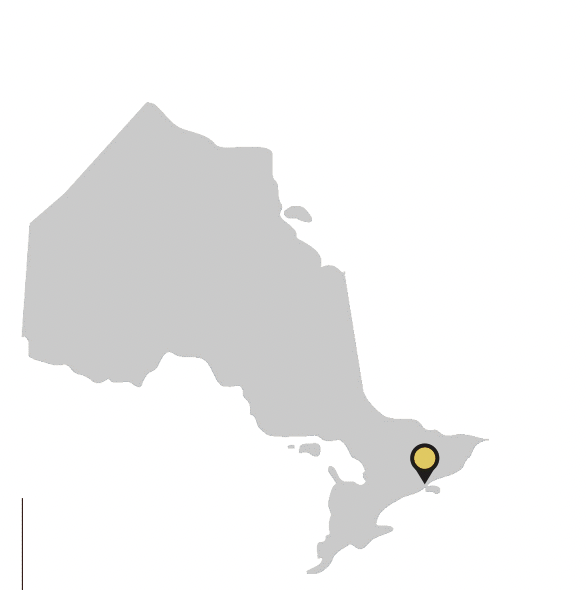
Getting there: Take Highway 401 to Belleville
Cost: Base rate is $250 per hunter for groups of two to four
Accommodation: Hotels and B&Bs can be found in Belleville
Contact: Adrian Taylor 613-743-4820
Originally published in the Nov.-Dec. 2020 edition of Ontario OUT of DOORS.


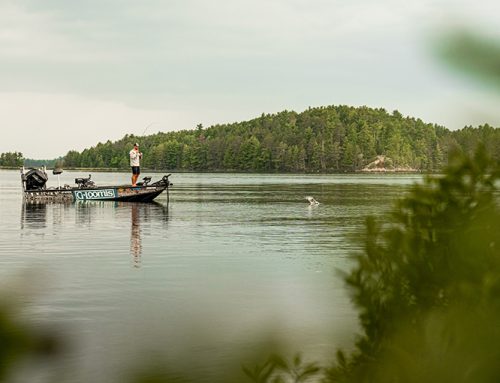
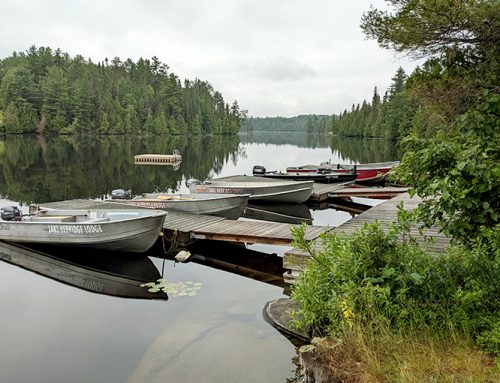
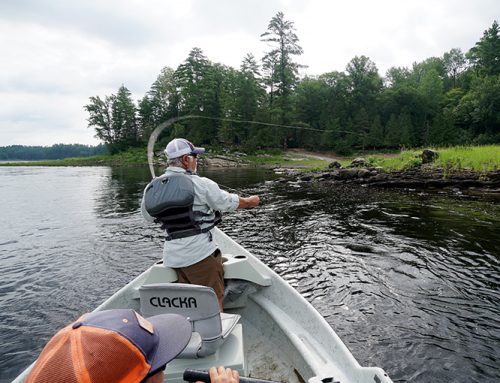
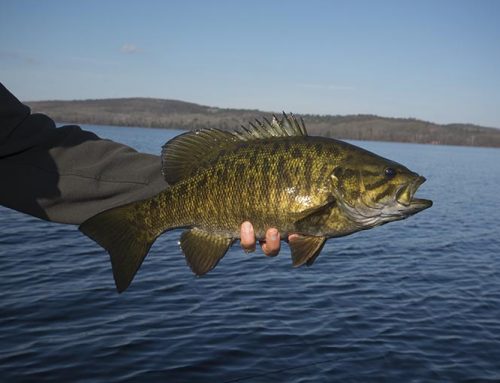
Interested in duck hunting in ontario
Richard,
Here are some more waterfowl stories for you: https://oodmag.com/category/hunting/waterfowl/